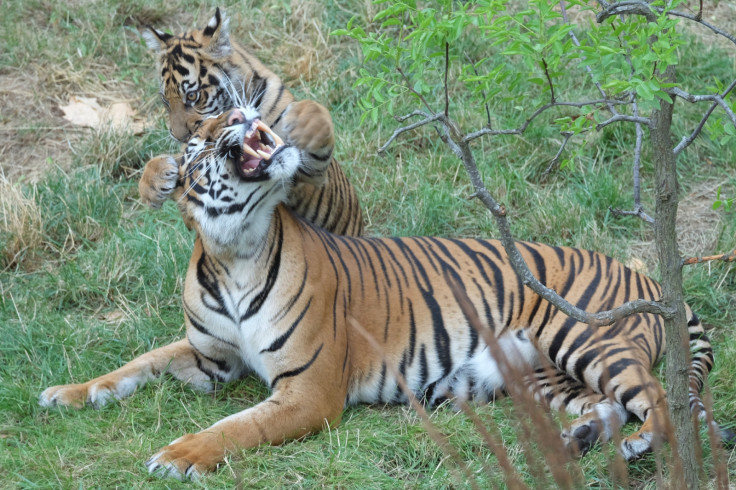How the tiger got his stripes: Can a mathematical equation answer that question?

How did the tiger get his stripes and why are they orientated in a certain way? Contrary to Rudyard Kipling's Jungle Book stories, they were not the result being condemned to wear them after killing a man, but instead are the result of a number of variables that can be explained through a mathematical equation.
Scientists have been modelling scenarios for how stripes develop since the 1950s, and while we do not exactly know why they are how they are, Harvard researchers have now assembled a range of these ideas to work out what variables are involved in the formation of stripes.
Tom Hiscock, lead author of the study published in the journal Cell Systems, said: "We wanted a very simple model in hopes that it would be 'big picture' enough to include all of these different explanations. We now get to ask what is common among molecular, cellular, and mechanical hypotheses for how living things orient the directions of stripes, which can then tell you what kinds of experiments will (or won't) distinguish between them."
Much of the early work into stripe formation was carried out by Alan Turing, who found patterns emerge when interacting substances make waves of high and low concentrations. However, his work never looked at why stripes are orientated in certain ways – i.e. why are tiger stripes vertical on their bodies?
"Patterning of periodic stripes during development requires mechanisms to control both stripe spacing and orientation," the recent study stated. "A number of models can explain how stripe spacing is controlled, including molecular mechanisms, such as Turing's reaction-diffusion model, as well as cell-based and mechanical mechanisms. However, how stripe orientation is controlled in each of these cases is poorly understood."
In the study, they used a generic model of periodic patterning to find the qualitative features of stripe orientation. They found their model could be used to predict three ways to orientate the direction of stripes – the thing that influences stripe density, the parameter gradient (which changes one of the variables involved in forming the stripe) and the direction of the molecular, cellular or mechanical origin.
They said that while their model is not quite there yet, it could one day be applied to more specific and complex models to show features of stripe orientation common to many biological systems. "We can describe what happens in stripe formation using this simple mathematical equation, but I don't think we know the nitty-gritty details of exactly what molecules or cells are mapping the formation of stripes," Hiscock said.
© Copyright IBTimes 2025. All rights reserved.






















